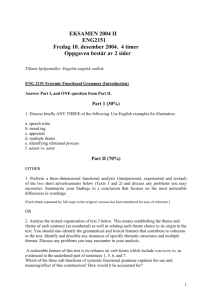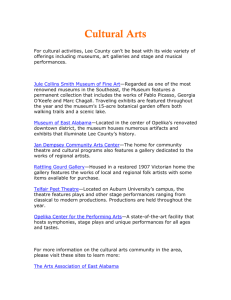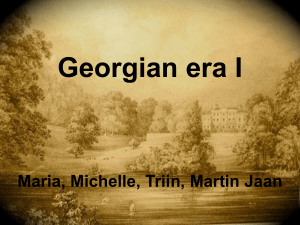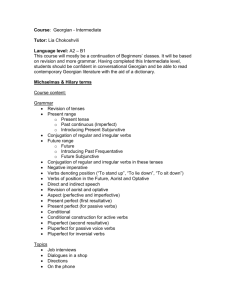introduction
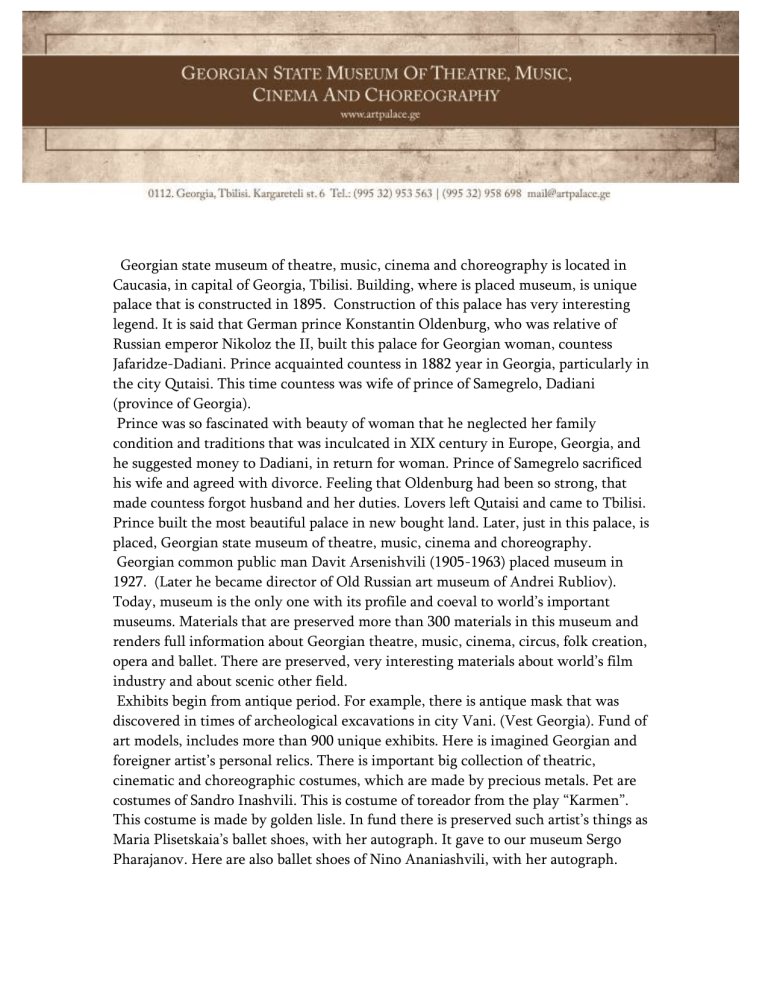
Georgian state museum of theatre, music, cinema and choreography is located in
Caucasia, in capital of Georgia, Tbilisi. Building, where is placed museum, is unique palace that is constructed in 1895. Construction of this palace has very interesting legend. It is said that German prince Konstantin Oldenburg, who was relative of
Russian emperor Nikoloz the II, built this palace for Georgian woman, countess
Jafaridze-Dadiani. Prince acquainted countess in 1882 year in Georgia, particularly in the city Qutaisi. This time countess was wife of prince of Samegrelo, Dadiani
(province of Georgia).
Prince was so fascinated with beauty of woman that he neglected her family condition and traditions that was inculcated in XIX century in Europe, Georgia, and he suggested money to Dadiani, in return for woman. Prince of Samegrelo sacrificed his wife and agreed with divorce. Feeling that Oldenburg had been so strong, that made countess forgot husband and her duties. Lovers left Qutaisi and came to Tbilisi.
Prince built the most beautiful palace in new bought land. Later, just in this palace, is placed, Georgian state museum of theatre, music, cinema and choreography.
Georgian common public man Davit Arsenishvili (1905-1963) placed museum in
1927. (Later he became director of Old Russian art museum of Andrei Rubliov).
Today, museum is the only one with its profile and coeval to world’s important museums. Materials that are preserved more than 300 materials in this museum and renders full information about Georgian theatre, music, cinema, circus, folk creation, opera and ballet. There are preserved, very interesting materials about world’s film industry and about scenic other field.
Exhibits begin from antique period. For example, there is antique mask that was discovered in times of archeological excavations in city Vani. (Vest Georgia). Fund of art models, includes more than 900 unique exhibits. Here is imagined Georgian and foreigner artist’s personal relics. There is important big collection of theatric, cinematic and choreographic costumes, which are made by precious metals. Pet are costumes of Sandro Inashvili. This is costume of toreador from the play “Karmen”.
This costume is made by golden lisle. In fund there is preserved such artist’s things as
Maria Plisetskaia’s ballet shoes, with her autograph. It gave to our museum Sergo
Pharajanov. Here are also ballet shoes of Nino Ananiashvili, with her autograph.
In fund of figurative art, is preserved more than 300 Georgian painter’s more than 10
000 exhibit. That shows well history of Georgian painting. Collection that is preserved in fund consists from painted portrait decorations of theatric figures and graphical composition’s sketches of costumes, Iran miniatures, French and German engraving, colored lithograph works. In fund, there is preserved works that are made by painters who were signed in unification “Mir Iskustv” which was formed in begging of XX century in Petersburg. Konstantin Korovin, Lev Baksti, Aleksandre
Benua, Aleksandre Golovin and Viktor Simov, These painters were called “Silver
Century’s” painters
Fund of manuscript consists from 160 funds and it includes documents, programs, different figures personal manuscripts and sketches, about theatres that are located in
Georgia. Marked collection has been inflating until 1861.
Numerous and rich is fund of library. 32000 exhibits are preserved there. Basis part of fund consists from Georgian and Russian language books about religion of theatre, music, cinema, choreography and art. In addition, there are preserved artistic literature, encyclopedia, dictionaries, and pieces. In fund, there are 300 musical books. Also, different journals and magazines. Unique treasure is book collection of solids of palace that adduced of part of library of Oldenburgs and Dadians.
Publications are 1633-1639 year’s.
In fund of photo and negative there are 10 000 exhibits. This material reflects history of Georgian theatre, music, film and choreography, from the part of XX century until today. With rich material there is preserved unique glass negatives, where is impressed the history of Georgian and foreign theatre, music, cinema and choreography. In addition, there are preserved personal archives of artists and directors.
Fund of plate preserves, the richest collection. Next to old plates, there are modern film and music records. 2503 exhibit impresses history of Georgian music. There is the most famous record studio’s “Isco Aste’s” etc. Fund includes video and audio material from theatre, opera and film.
Fund of placards was created, until museum was established. There is more than 70
000 placards. The most important is placards fund of period until revolution and after, which includes materials since 1871 year. Materials that are preserved in this fund are very important, because in 1973 year, theatre of opera and ballet was burned out and materials that we have are only one.
